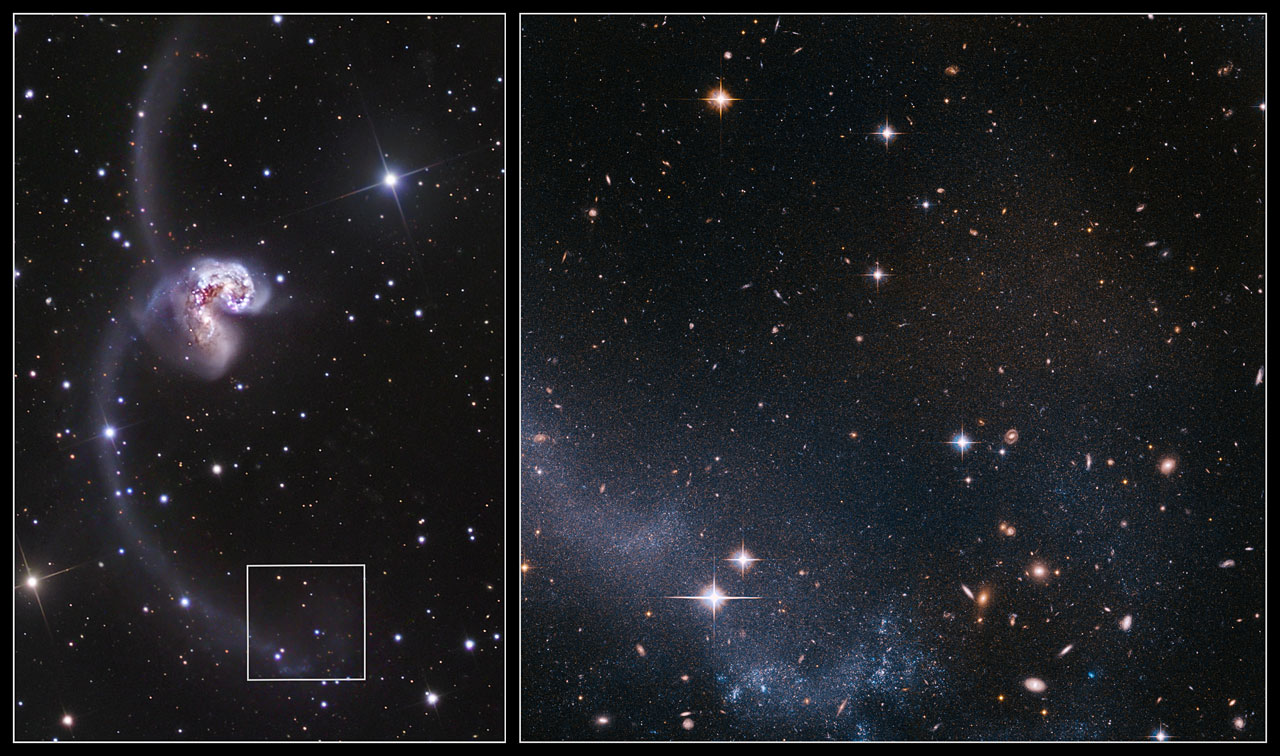It’s time for another beautiful image from the Hubble Space Telescope. And this time, there’s an added bonus… video. The latest images released by Hubble are based on research of the Antennae Galaxies, known as NGC 4038 and NGC 4039. Astronomers used to think that they were 65 million light-years away, but the new research puts them much closer; probably 45 million light-years away.
This image was captured by Hubble’s Advanced Camera for Surveys and Wide Field Planetary Camera 2, to observe individual stars spawned by the cosmic collision.
Here’s the Hubble video to help you get a sense of the scales involved (with pretty music too).
The astronomers targeted the object’s southern tidal tail, which was thrown away from the active central regions. This tail contains material hurled away from the main galaxies as they came together. Astronomers looked for older red giants to make the estimate for their distance. These red giants are known to always shine with the same brightness, and by knowing this brightness, they were able to calculate the galaxies as being 45 million light-years away.
Since this galactic merger is happening relatively close, it’s one of the best examples astronomers have to study this process. And now that the galaxies are closer than astronomers previously believed, it changes the size of many objects the astronomers are studying. For example, the size of the star clusters being formed by the collision match the size of other galaxy mergers, instead of being 1.5 times larger than they should be.
The Antennae Galaxies are named for the two long tails of stars, gas and dust thrown out of the collision that resemble the antennae of insects. They can be found in the constellation of Corvus, the Crow.
Original Source: Hubble News Release


Well now, lesseee. The previous distance estimages were based on what, red-shift? This appears to be another example of red-shift being a pretty poor method of predicting distance. Unless of course the prior distance estimate was based on something other than red-shift, the article doesn’t say but what else is there?
Notice gravitational lensing just above the bottom right in the inset image?
Cepheid Variable stars … Type 1A Supernovae … each has certain characteristic properties that make them reliable standard candles …… check them out
I’ve observsed and journaled these two galaxies form my Herschel 400 search. I have to admit, this is a little more impressive than what they look like through a Celestron 8″ SCT!
You need an obsession 18 mate!
In Fraser’s article dated Jan 4,2004 “Chandra Sees Colliding Galaxies” the ditance is quoted as 30 million LY’s.What gives?
Yes the 65 LY’s distance was based on redshift.
Quote fm Science “The most widely quoted distance to the Antennae is ∼ 20 Mpc, based on the recession velocity of the system corrected with the flow model of Tonry et al. (2000).
Even bigger question: What gives?
The picture on the left is by Rob Gendler with a 14 inch scope! Check out http://www.robgendlerastropics.com/NGC4038AU.html
Wonder what the image on the right would look like with ACS?